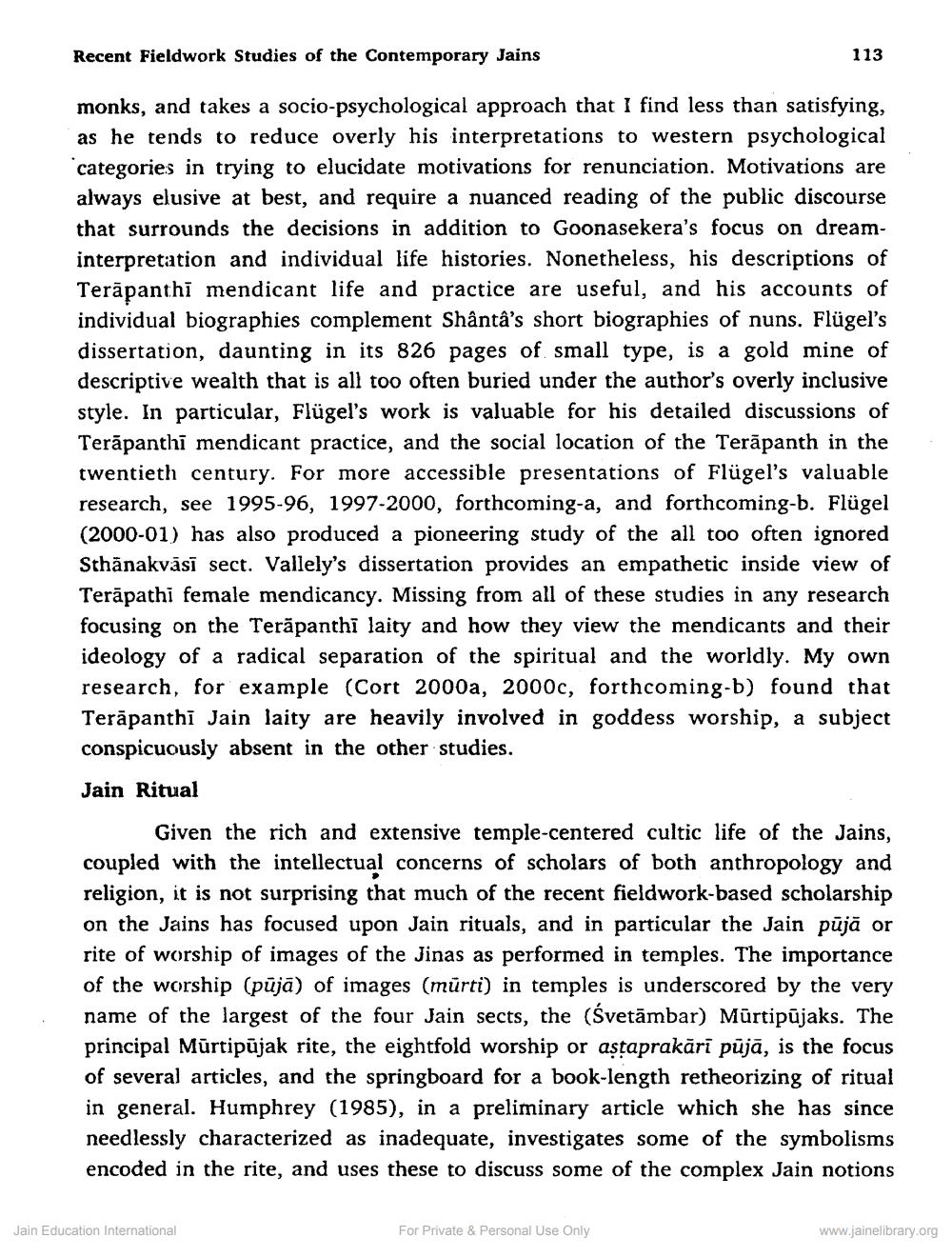________________
Recent Fieldwork Studies of the Contemporary Jains
113
monks, and takes a socio-psychological approach that I find less than satisfying, as he tends to reduce overly his interpretations to western psychological categories in trying to elucidate motivations for renunciation. Motivations are always elusive at best, and require a nuanced reading of the public discourse that surrounds the decisions in addition to Goonasekera's focus on dreaminterpretation and individual life histories. Nonetheless, his descriptions of Terāpanthi mendicant life and practice are useful, and his accounts of individual biographies complement Shântâ's short biographies of nuns. Flügel's dissertation, daunting in its 826 pages of small type, is a gold mine of descriptive wealth that is all too often buried under the author's overly inclusive style. In particular, Flügel's work is valuable for his detailed discussions of Terāpanthi mendicant practice, and the social location of the Terāpanth in the twentieth century. For more accessible presentations of Flügel's valuable research, see 1995-96, 1997-2000, forthcoming-a, and forthcoming-b. Flügel (2000-01) has also produced a pioneering study of the all too often ignored Sthānakvāsī sect. Vallely's dissertation provides an empathetic inside view of Terāpathi female mendicancy. Missing from all of these studies in any research focusing on the Teräpanthi laity and how they view the mendicants and their ideology of a radical separation of the spiritual and the worldly. My own research, for example (Cort 2000a, 2000c, forthcoming-b) found that Terāpanthi Jain laity are heavily involved in goddess worship, a subject conspicuously absent in the other studies.
Jain Ritual
Given the rich and extensive temple-centered cultic life of the Jains, coupled with the intellectual concerns of scholars of both anthropology and religion, it is not surprising that much of the recent fieldwork-based scholarship on the Jains has focused upon Jain rituals, and in particular the Jain pūjā or rite of worship of images of the Jinas as performed in temples. The importance of the worship (pūjā) of images (mūrti) in temples is underscored by the very name of the largest of the four Jain sects, the (svetāmbar) Mūrtipūjaks. The principal Mūrtipūjak rite, the eightfold worship or astaprakāri pūjā, is the focus of several articles, and the springboard for a book-length retheorizing of ritual in general. Humphrey (1985), in a preliminary article which she has since needlessly characterized as inadequate, investigates some of the symbolisms encoded in the rite, and uses these to discuss some of the complex Jain notions
Jain Education International
For Private & Personal Use Only
www.jainelibrary.org




